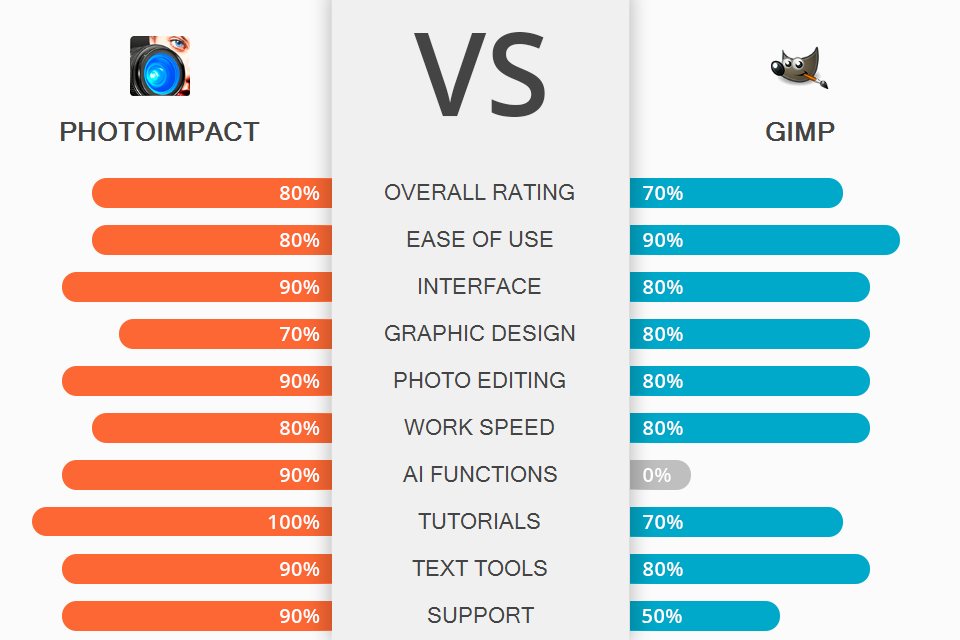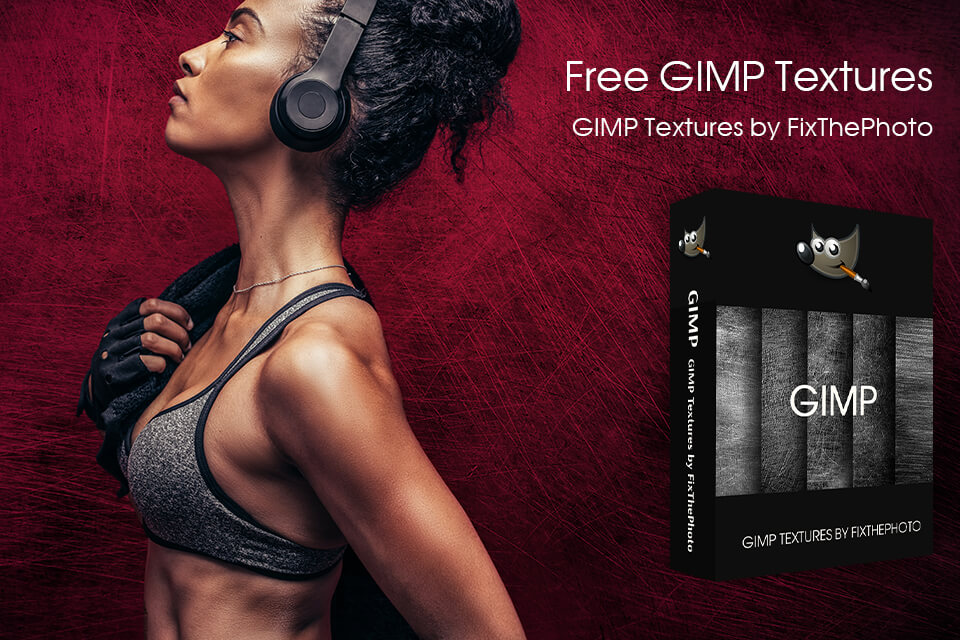
Interested in a PhotoImpact vs GIMP comparison? This overview will help you learn their primary features, pricing plans, level of complexity, and much more. After reading and analyzing the provided information about the tools, cost, ease of use, and storage fees of both options, you’ll be able to choose the optimal graphic design software for your needs.
PhotoImpact is a photo editing software for beginners that can be recommended to everyone in search of a basic image correction utility. It’s frequently used by both professionals and newbies and represents a simple-to-master option that provides a plethora of tools for quickly and efficiently enhancing images. Additionally, PhotoImpact lets you design slideshows, videos, web graphics, and much more.
GIMP is a free Photoshop alternative for users that don’t want to or can't afford to purchase Adobe Creative Suite.

PhotoImpact photo editing software provides intuitive and easily applicable tools while also inviting you to make use of the included templates for designing ad banners and other graphic elements. This allows you to receive unique designs by adding your own graphics, text, and images to the premade templates. PhotoImpact also comes with special features for designing web graphics like buttons and backgrounds for your website.
Moreover, the software comes with advanced clone and mask features that allow you to perform professional edits. They help get rid of unnecessary objects and blemishes with minimum effort. Finally, PhotoImpact has a project wizard that provides the functionality necessary for designing DVD labels, gift cards, slideshows, and posters.

GIMP is a free software that is used as an online alternative to professional editors. It offers a broad range of professional-level tools for enhancing images and making your own graphic designs.
GIMP has layers, easily customizable brushes, filters, and automated enhancement features, while also allowing you to use a plethora of plugins (some come pre-installed while others you have to download yourself).
The software has gathered a loyal community of users that continuously develop and update it while also fixing all bugs and errors. As a result, you get to enjoy an advanced free editor that is more robust than a lot of paid options.

PhotoImpact can be purchased on Corel’s official digital store. You have the option to either purchase the latest full version of the software or an update if you already have an earlier edition. Upgrading will send you back $79, while the full edition costs $109.
You can get GIMP free and make use of all of its functions without fear of any hidden fears.
PhotoImpact is aimed at digital photography enthusiasts who don’t need advanced editing functionality. The software comes with automated tools and basic manual editing features. That said, PhotoImpact lacks the power necessary for performing professional-level enhancing or complex graphic design.
GIMP includes many tools that you can usually only find in paid editors and so is the better option for professional use when it comes to the PhotoImpact versus GIMP battle. Even so, the provided features are still rather basic so unless you spend a lot of time messing around with plugins and studying manuals, you’ll struggle to use GIMP for serious professional projects.

To speed up and simplify your workflow, try using third-party plugins that are for GIMP. They can be used for both raster graphics to create a grainy effect and vector images to add glow or volume to the objects.